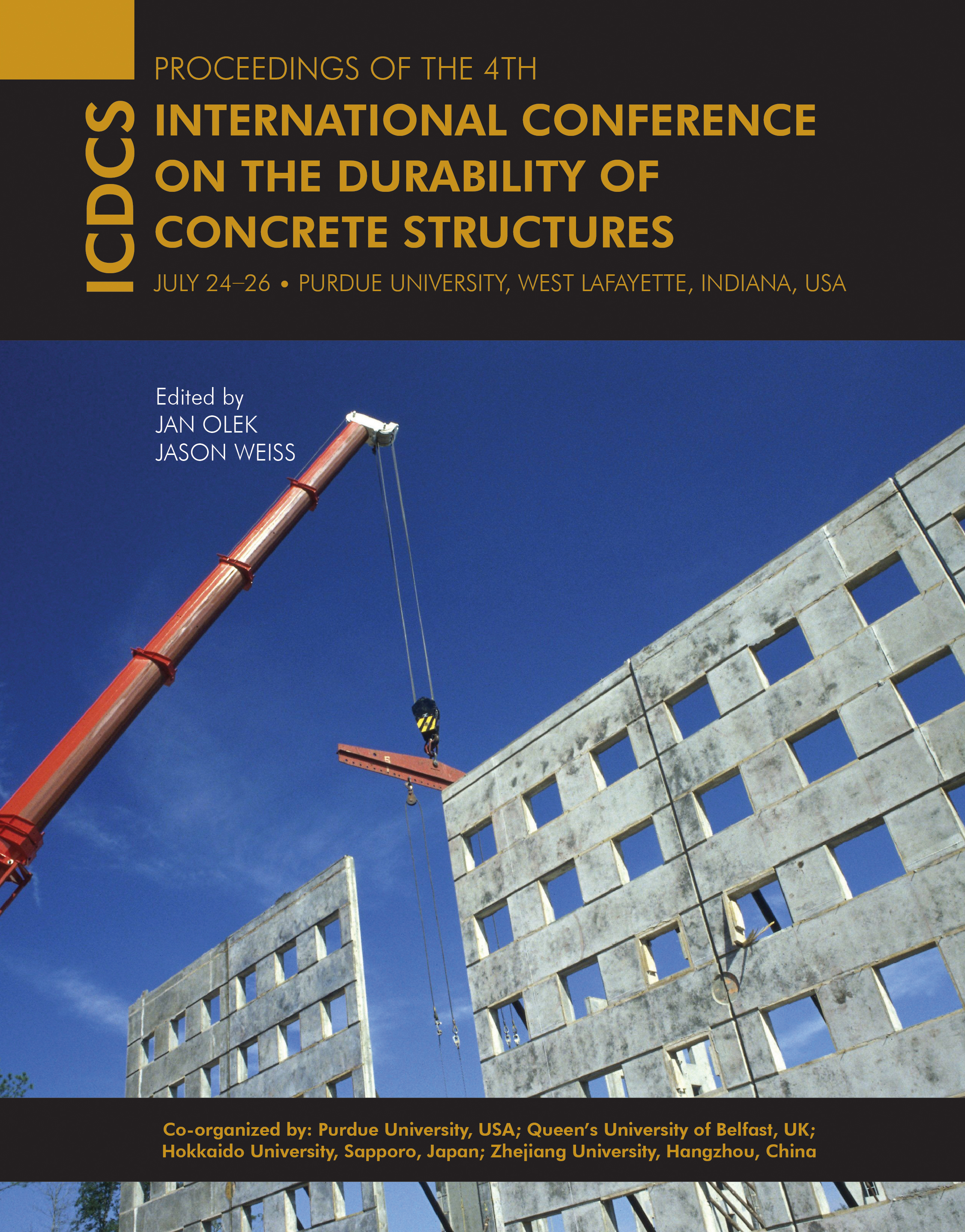Keywords
cement-based materials, CNS, TEOS, durability, nanoSiO2
Abstract
A dense surface structure of cement-based material is favorable for its resistance to the impacts of environment. In this work, effectiveness and mechanisms of the surface treatment of cement-based materials with nanoSiO2 of different states, that is, colloidal nanoSiO2 (CNS) and the in situ formed nanoSiO2 gel through the hydrolysis of its precursor of tetraethoxysilane (TEOS), by brushing and soaking techniques, were investigated. Results showed that both CNS and TEOS are capable of reducing the liquid and gaseous transport properties of hardened cement-based materials, although at a different extent. It revealed that the pozzolanic reactivity and the filler effect of nanoSiO2 are the main causes for the refining of the threshold size and the reduction of volume of the capillary pores, and they finally lead to a linearly reduction of the transport property. From this study, it can be reflected that surface treatment of cement-based materials with nanoSiO2 would be an optimal alternative of making concrete structure more durable.
DOI
10.5703/1288284315401
Included in
Surface Treatment of Cement-Based Materials with NanoSiO2
A dense surface structure of cement-based material is favorable for its resistance to the impacts of environment. In this work, effectiveness and mechanisms of the surface treatment of cement-based materials with nanoSiO2 of different states, that is, colloidal nanoSiO2 (CNS) and the in situ formed nanoSiO2 gel through the hydrolysis of its precursor of tetraethoxysilane (TEOS), by brushing and soaking techniques, were investigated. Results showed that both CNS and TEOS are capable of reducing the liquid and gaseous transport properties of hardened cement-based materials, although at a different extent. It revealed that the pozzolanic reactivity and the filler effect of nanoSiO2 are the main causes for the refining of the threshold size and the reduction of volume of the capillary pores, and they finally lead to a linearly reduction of the transport property. From this study, it can be reflected that surface treatment of cement-based materials with nanoSiO2 would be an optimal alternative of making concrete structure more durable.






Comments
This proceeding publication is based upon the following previously published scholarship:
1: Hou, P., Cheng, X., Qian, J., and Shah, S.P. (2014). Effects and mechanisms of surface treatment of hardened cement-based materials with colloidal nanoSiO2 and its precursor. Construction and Building Materials, 53(1). 66-73. http://dx.doi.org/10.1016/j.conbuildmat.2013.11.062
2: Hou, P., Cheng, X., Qian, J., Zhang, R., Cao, W., and Shah, S.P. (2015). Characteristics of surface-treatment of nano-SiO2 on the transport properties of hardened cement pastes with different water-to-cement ratios. Cement and Concrete Composites, 55(1). 29-33. http://dx.doi.org/10.1016/j.cemconcomp.2014.07.022